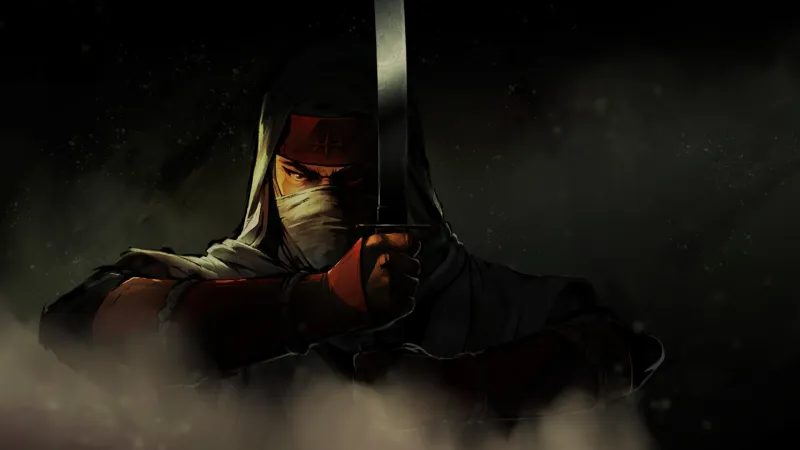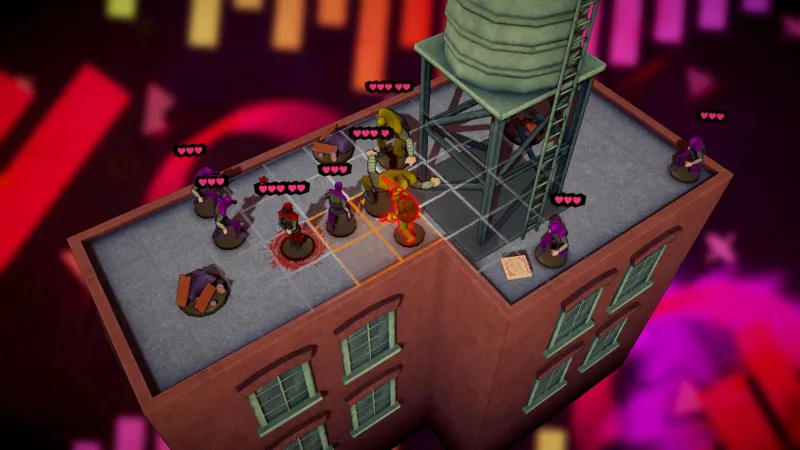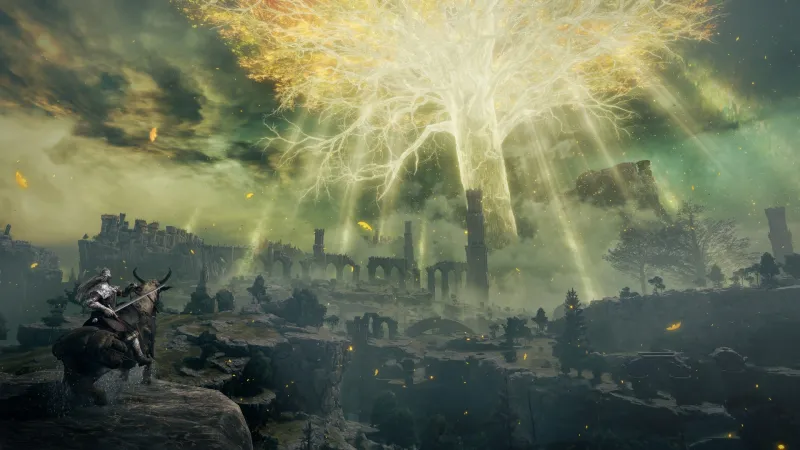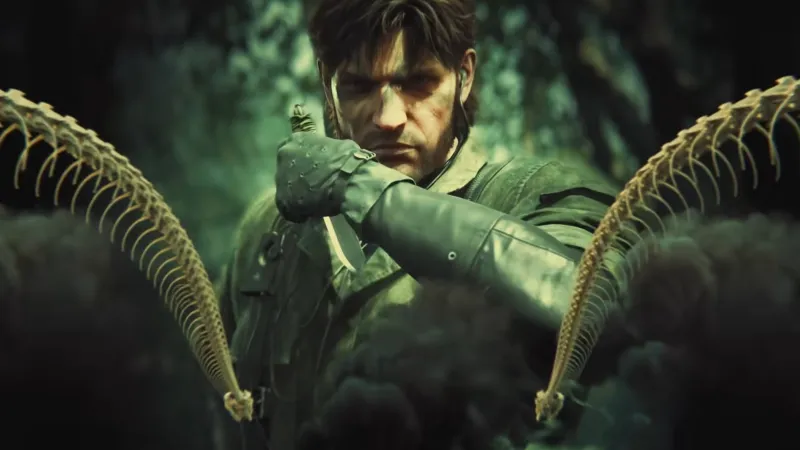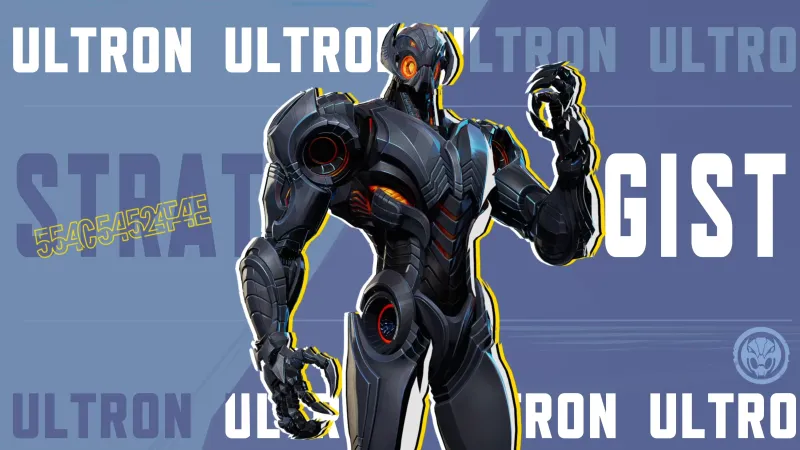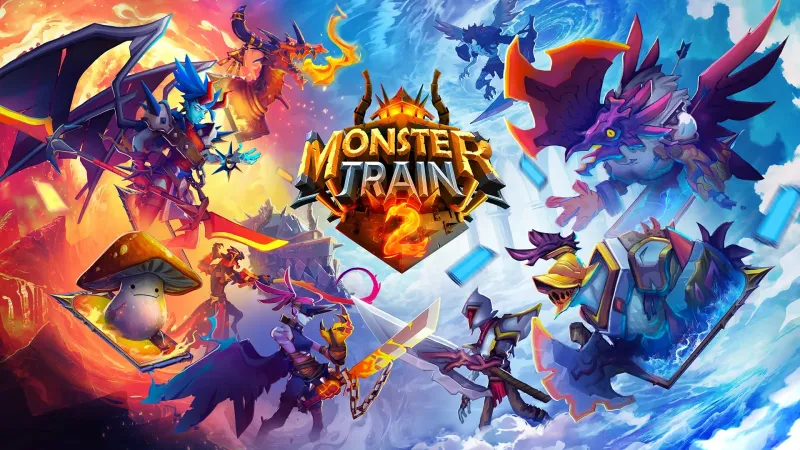In 1987, Sega sought to capitalize upon the mainstream popularity of ninjas with an arcade title called Shinobi. The title was a big hit for Sega as it attempted to recapture success in the arcade market, and the company leveraged the acclaim to help it make headway in the console gaming market as it converted the game to the Sega Master System, PC, and even Sega’s future rival platform, the Nintendo Entertainment System. The result was a multiplatform hit that established its protagonist, Joe Musashi, as one of Sega’s early heroes and spawned several sequels in arcades and across Genesis, Game Gear, Saturn, PlayStation 2, and 3DS.
However, following the 3DS release of Shinobi 3D in 2011, the franchise came to a screeching halt. What was once considered one of Sega’s flagship franchises went dormant for over a decade, and memories of Joe Musashi’s adventures settled securely into the realm of nostalgia. Though Sega released an enhanced version of the original game in 2020 on Switch as part of the retro series Sega Ages, it felt increasingly like 2011 was the final time fans would step into the tabi of the Oboro Clan.
The Sega Ages version of Shinobi (2020)
In that time, other franchises fell away one by one. Longtime Sega mainstays like Super Monkey Ball and Virtua Fighter joined already dormant series like Golden Axe, Jet Set Radio, and Crazy Taxi, as increasing emphasis was put on franchises like Sonic the Hedgehog and, in the coming years, Yakuza (Like a Dragon).
“When people hear ‘Sega’ nowadays, they usually have the impression of Sonic or Like a Dragon, which we are very grateful for,” director of Sega’s content production department Kagasei Shimomura says. “These are IPs that we are very proud of, of course, but we do think that if you had asked people maybe 20 years ago or 30 years ago, there would have been fans thinking of many more IPs than Sonic or Like a Dragon. Those fans’ excitement is very important.”
Power Surge

Revenge of Shinobi (1989)
Power Surge
Shimomura and his team examined the back catalog, realizing the sheer breadth of IPs under Sega’s umbrella over its more than 60 years in existence. They decided it would be to the company’s advantage and would appeal to a broader fan base to revive various inactive franchises.
The aforementioned Sega Ages collection kept several classic series alive through enhanced remasters, but Shimomura, who helped spearhead Sega Ages, didn’t think that was enough. “We didn’t just want to go and make remasters or remakes of all the titles that are already around,” he says. “We want people to enjoy and be satisfied by what we put out there, and find ways to create new Sega fans.”
After deciding to rebuild these seemingly lost franchises, Shinobi emerged as an early favorite for the fan base and the team. Shimomura loves the series as a player but also noticed symmetry between this new Sega initiative and Sega Ages, as Shinobi was the first game to enter development in the Nintendo Switch Sega Ages program. Though it was not the first to release in that collection, Shimomura appreciated the poetic nature of having Shinobi be the first series to revive under this new initiative of bringing back legacy IPs.
Sega’s plans to develop new games in previously inactive franchises were revealed during The Game Awards 2023. The teaser trailer announced new projects for Jet Set Radio, Golden Axe, Streets of Rage, Crazy Taxi, and Shinobi. In addition, though not officially a part of this initiative, Sega released the first all-new entry in the Super Monkey Ball series in over a decade last year, and a new Virtua Fighter game is in development.
Shimomura began thinking about how to approach these classic franchises, with special attention paid to Shinobi. He feels he can trace the lineage of all Sega action titles back to the original Shinobi game, making it a fitting place to start with the revival process for these IPs.
Retro Reconnection

Streets of Rage 4 (2020)
Retro Reconnection
Once Shinobi was settled as the appropriate title to kickstart this new strategy, Shimomura and the rest of Sega began looking for a development team that would best possess the capabilities to deliver a product that pays homage to the past while effectively bringing the series into the modern-day gaming landscape. Sega looked no further than a small indie studio that had recently accomplished that feat with two of its other long-dormant Sega franchises.
Lizardcube, a Parisian game studio known for its gorgeous 2D art styles and tight gameplay, released Wonder Boy: The Dragon’s Trap in 2017 and Streets of Rage 4 in 2020. Both titles received critical acclaim, earning scores in the 80s on the reviews aggregate site Metacritic. However, while both are new entries in Sega-owned franchises, Sega was not directly involved with developing or publishing those titles. Instead, Sega licensed its IPs to Lizardcube.
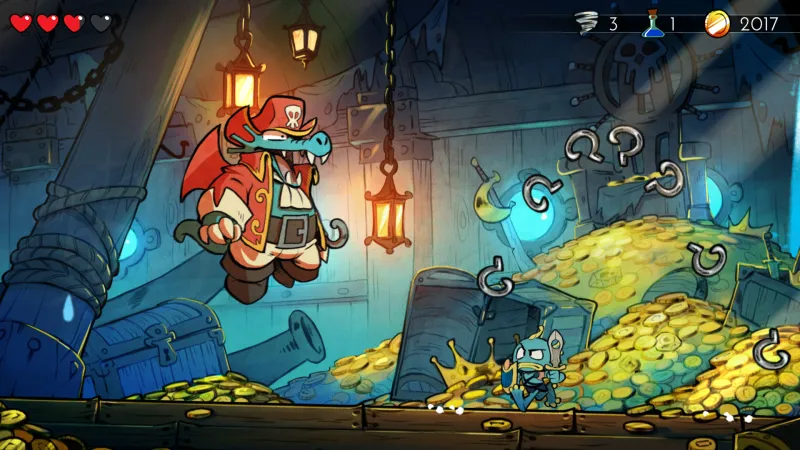
Wonder Boy: The Dragon’s Trap (2017)
“After the success of Streets of Rage 4, Sega came to us, basically asking how we’re doing and if we had any other ideas about reviving,” Lizardcube CEO and creative director Ben Fiquet says. “As big Sega fans, my blood started to boil once again.”
Fiquet and his team at Lizardcube pitched Sega on a Shinobi game, which proved serendipitous, considering Shimomura’s preference for that franchise to kick off the legacy IP initiative. Lizardcube’s pitch impressed Sega in striking a balance between old and new, simultaneously delivering a nostalgic and novel experience, a common challenge for any developer remaking, remastering, or creating a new entry in a classic series.

Shinobi: Art of Vengeance (2025)
“Getting the tone right in terms of art, in terms of vibe, in terms of different setup, but the gameplay, sometimes people don’t remember the gameplay exactly; they just remember playing a ninja and being a fast action game for the time,” Fiquet says. “So, they want a fast action game, but it’s not the same thing as in the ‘90s on the Genesis. A fast action-platformer game has a lot of competition now. It needs to appeal to modern gamers, which, in my opinion, is fair because nostalgia can only get us so far, and we want the new people to care, and some people are young and they don’t know about the license.”
After Fiquet’s team at Lizardcube submitted a pitch to Sega, Shinobi: Art of Vengeance was born. “Lizardcube is a studio that has extreme attention to detail and quality,” Shimomura says. “When they were working on Streets of Rage 4, this was also something that we could tell. Back then, when Streets of Rage 4 came out, it wasn’t that major to have revivals of older IPs on the market at that point, but we realized by the way people responded that working with a studio like Lizardcube that really has love and passion for Sega IPs is definitely something that users also appreciated.”
Or-Orobos

Or-Oboros
Both sides agreed that a 2D action title would be the most effective and appropriate way to bring Shinobi back. However, that gameplay style still required iteration. Using Shinobi 1, 2, and 3 as the primary inspirations, Lizardcube began experimenting with ways to create a more engaging experience for the player.
“We started the game as a direct follow-up of the gameplay for the original games, but we soon realized, even at the prototype phase, that it was kind of missing something,” Fiquet says. “We soon realized that if you wanted to have the player care about what they will be doing the most, which is fighting, the fighting will need to be more interesting. That’s why you have a lot of moves now, and it’s a very interesting mix because it’s more like a beat-‘em-up in a platforming environment. You have a combo system, you have different moves at your disposal, powers, ultras, and different stuff, so that when the player is doing what they’re doing the most, they are entertained.”
Shimomura appreciated Lizardcube’s trademark striking art style and its approach to older IPs with respect but without fear of renovating where needed. “The action-platformer genre is really part of the Shinobi DNA; we call it the lore,” he says. “We didn’t want to make a remake or remaster, but we wanted to make sure that we stay true to the lore and also innovate alongside. We identify the lore to be the DNA of an IP, which is not just a story or a certain setting, but really the essence of the IP itself, which we do believe is, in part, the action-platformer genre.”

This time around, Sega wanted to be more involved as a development and publishing partner rather than simply licensing the Shinobi IP like it did for Wonder Boy and Streets of Rage. “As you can imagine, it’s like a dream come true; if you’re a Sega fan and you were a kid in the ‘90s, working with Sega, it’s kind of meeting your heroes in a way,” Fiquet says. “Sega has a better knowledge of games in general, and their own games as well. The back and forth has been more constant from the beginning because our producer, whom I really like, came from game development; they are not just marketing or a producer just trying to sell you something because this is an old IP. They really know what they’re talking about.”
The producer Fiquet refers to is Toru Ohara, who started as a game designer at Sega more than 30 years ago and serves as chief producer on Shinobi: Art of Vengeance from Sega’s side. As Fiquet indicated, Sega is taking a more hands-on approach than simply filling traditional publisher duties. For instance, the art style in Lizardcube’s first pitch project was initially what Fiquet described as “a little soft.” Ohara and his team encouraged Lizardcube to become more expressive and use more brush strokes, resulting in the striking art style we now see in Shinboi: Art of Vengeance.
“When they shared their ideas with us, we felt that this European art style in combination with a Japanese feel is something very special and unique,” Ohara says. “We tried to add to their very beautiful art style through our feedback [to create] a little bit more of a Japanese feel to make it very distinctive.”
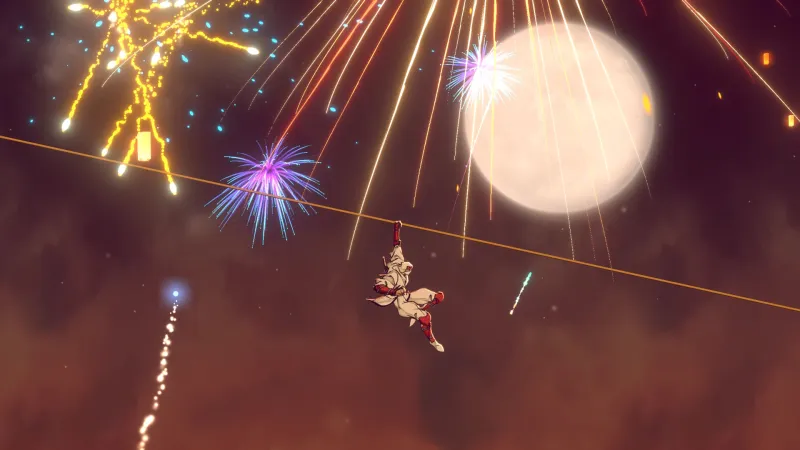
Ohara’s team consulted with Lizardcube on elements like brushstroke types, building designs, and other components to add more Japanese flavor to the visual aesthetics of Art of Vengeance. This collaboration’s result is vibrant and beautiful, even within a crowded 2D action-platforming genre. As Fiquet describes it, Shinobi: Art of Vengeance possesses a style that is often reserved for animation or comics rather than video games. This gorgeous art style is the most realized continuation of the path ’90s Genesis games like Aladdin, Earthworm Jim, Cool Spot, and The Lion King sent Fiquet down three decades ago.
But it wasn’t just feedback and suggestions; a team led by Ohara actively joined Lizardcube for development. This wasn’t solely to deliver the best product possible but also to ensure everything remains wholly true to the Shinobi franchise. From the characters, world, themes, and, of course, the main protagonist Joe Musashi, Ohara, Shimomura, and their teams at Sega worked closely with Lizardcube to emphasize authenticity.
Though Sega was precious about remaining true to the series, it encouraged evolution and experimentation. “We were very careful not to destroy the atmosphere that is very unique to Shinobi,” Ohara says. “We felt that [the 2D action-platformer genre] needed to be evolved and modernized in order to make sure that, nowadays, players can enjoy the game and that the play-feel is correct, and that you have a game that is up to modern standards quality-wise. We were very particular not to keep everything as it was just for the sake of keeping it as it was.”
Striking in the Open
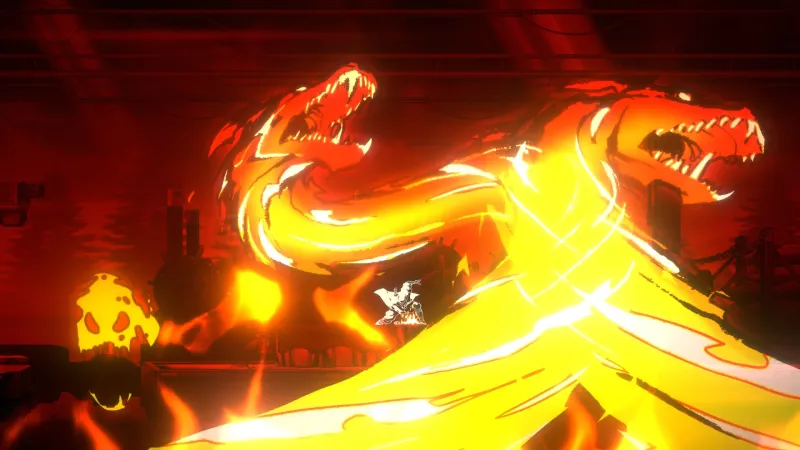
Striking in the Open
Though Shinobi: Art of Vengeance was first teased during The Game Awards 2023, another 2D ninja-based action-platformer in a legacy ’90s IP from a renowned indie developer was announced at The Game Awards 2024. Ninja Gaiden: Ragebound is set to arrive later this year from The Game Kitchen, the studio behind the Blasphemous franchise.
“I think, in a good way, there’s a lot going on in the action game market lately,” Ohara says. “We think there are a lot of great games coming out, not only indies, but new creators creating new types of 2D action games, and just so many new ideas.”
As we approach the release of Shinobi: Art of Vengeance later this summer, Ohara feels confident that Shinobi: Art of Vengeance sets itself apart from other seemingly similar titles. “I really think there is something very new and distinct to this title, mainly the play-feel and a large variety of choices that you, as the player, can make,” he says. “The game starts out as a normal action game, but it does feel much more like a fighting game in the end, where you have all these different combos that you could choose from because you can learn to do more and more and be able to do more and more the further you go.”
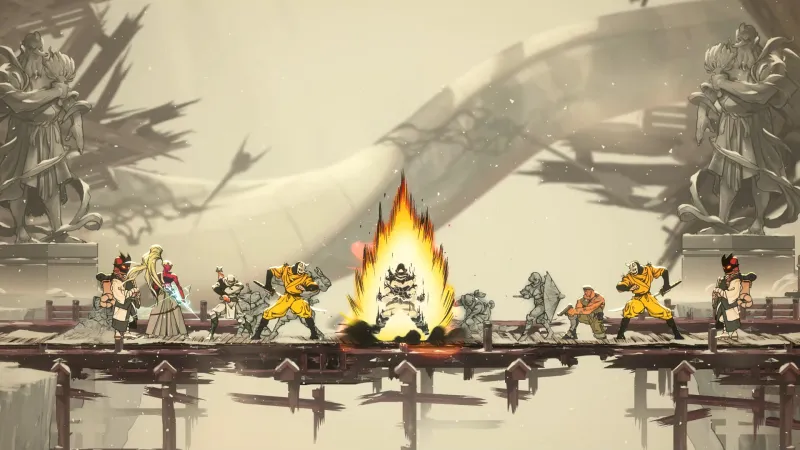
Sega isn’t viewing this as a one-off revival. If successful, the Shinobi franchise could experience a sustained revival that sees it retake a place of prominence among Sega IPs. “Most important for us is to create games, of course,” Shimomura says. “That being said, we do feel strongly about growing IPs and nurturing our IPs. So, the game release comes first, but we have also put out a release before about certain video content, but there are so many things that could happen in the future. Nothing is set in stone, of course, but there could be maybe comics or goods […] We do think that IPs are supposed to evolve and expand, and we really do feel very strongly about our Shinobi IP and want to take care of it and nurture it. Maybe there might be a Vengeance 2 somewhere along the road. This is obviously nothing that’s planned right now, but it really depends on how we can nurture the IP in the future and how the IP is going to grow, but we definitely do want to grow it.”
But Shinobi: Art of Vengeance isn’t the only legacy IP returning in the near future. Franchises like Crazy Taxi, Jet Set Radio, Golden Axe, and Streets of Rage were also announced in that 2023 teaser video. “We can’t talk in detail about anything, but that being said, we are considering several projects and are working on several projects,” Shimomura says. “Not only games, but also other things that have been [announced] already. We’re really looking forward to growing several of our IPs and making sure that we have several fun things coming up in the future.”
Shinbobi: Art of Vengeance arrives on PlayStation 5, Xbox Series X/S, PlayStation 4, Xbox Series X/S, Switch, and PC on August 29.



